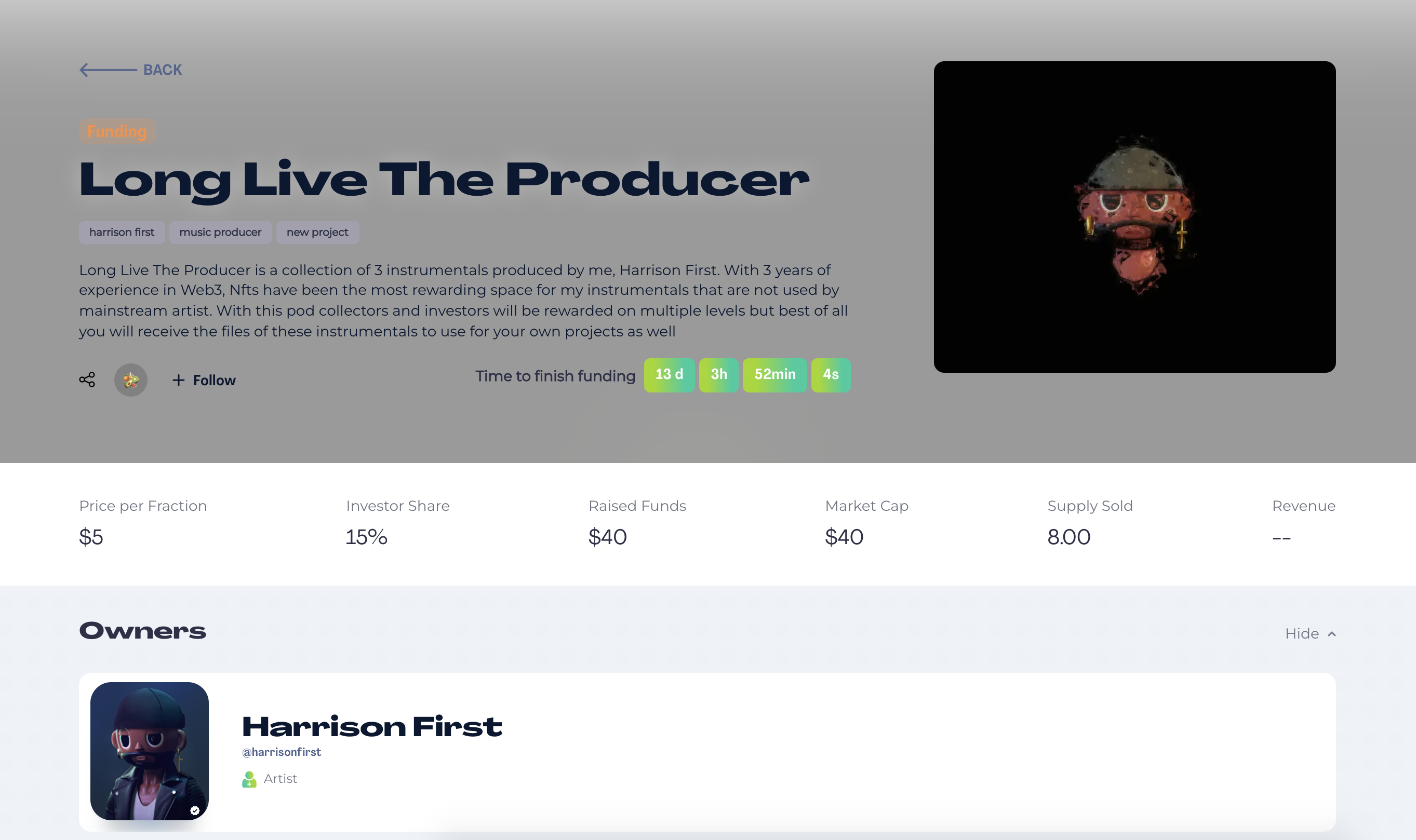With the return of LimeWire, the creative landscape may finally be on the right path towards minimizing piracy and intellectual property theft, as new native Web3 music streaming platforms reveal themselves to their respective communities.
Back in March, the infamous peer-to-peer (P2P) file-sharing platform Limewire announced it would be returning, but this time, taking the form of an NFT marketplace.
On March 9, LimeWire relaunched its website, sharing its mission to revitalize its image for a new generation. With a powerful advisory board, LimeWire brings music industry veterans Tareef Michael (Wu-Tang Clan manager), former Def Jam A&R Pedro Genao, and H.E.R.’s manager Jeanine McLean-Williams, among others.
SponsoredThe initial demise of LimeWire
Initially launched in 2000 by Mark Gorton, LimeWire soared in popularity, gaining a reputation for its major role in pirating music and movie files.
Ten years later, a judge ruled over the many copyright infringement claims the platform faced, leading to LimeWire’s ultimate demise in October 2011, and a $105 million out-of-court settlement between Gorton and a voluminous list of major record companies, including the Recording Industry Association of America (RIAA).
According to research done by NPD, the demise of LimeWire decreased piracy, falling from a high of 16 percent in late 2007 to 9 percent at the end of 2010. Specifically, the average number of music files downloaded from other P2P networks after LimeWire closed shop, declined from 35 tracks per person in Q4 2007 to just 18 tracks in Q4 2010.
In May 2022, Austrian entrepreneur-brothers Julian and Paul Zehetmayr purchased LimeWire’s intellectual property with funds from their previous startups.
With a new team and advisory board, LimeWire aims to be a forerunner in the NFT boom, putting its days of piracy behind it, and serving as a platform to help provide the visibility for up-and-coming artists and creators.
Migrating streaming revenues on-chain

In February, Be[In]Crypto sat down at ETHDenver with pioneer Web3 music platform, Myx, which allows Web3 native artists to take control over their music distribution, while avoiding the many pitfalls Web2 platforms have left behind, including the ongoing battle against piracy.
The company believes that Web3 serves as a way out of piracy through the IPFS decentralized file storage system.
Sponsored Sponsored“Audio files can finally be encrypted and stored securely across a network of nodes,” a Myx executive told Be[In]Crypto. “Right now, this is the most cutting-edge way to secure your files on music platforms.”
The company referenced platforms like Audius, which are still plagued by piracy:
“Many of the artists who have joined our platform since early February have expressed their distaste for Audius, because the platform advertises they pay artists for streaming, but in reality, don’t. Royal, on the other hand, does something very similar to us, with the difference that Royal’s artists take investments from fans while sharing streaming revenues from Web2 platforms.”

However, the mechanisms by which many platforms are touting, are “extremely opaque,” according to the executive, where the teams are looking to build a streaming platform where revenues from streaming are all on-chain, for all investors to see and trust.”
During our conversation, Myx referred to a particular moment in George Orwell’s novel 1984, where Winston was thinking about O’Brien, someone he had never spoken to, but remembered a dream he had where O’Brien told him that they would meet “in the place where there is no darkness.”
Adopting that same philosophy, Myx aims to connect with like-minded artists “who have stood the test of rotten platforms and legalities that have kept an awakening of simmering talent wanting to follow their passion under the hood of ‘just a hobby.’”
SponsoredWhile the platform is currently available in its soft launch phase, it anticipates going public in Q2 of this year. It currently has over 200 artists, who are mostly considered to be early Web3 native grassroots artists, including Harrison Fir$t, Dyln, and fifirong.
Through the platform’s Pods feature, fans are able to invest and earn alongside their favorite artists, which provides for multiple owners of music to collaborate and earn together on the economics and governance of that music. For example, all tracks in a Pod, when streamed on Myx, earn revenue, so all owners of the Pod token (media fractions), receive the revenue proportional to their Pod ownership.
Binance Smart Chain’s first music streaming platform
Another platform, ROCKI, which was present at NFT LA, launched in late 2020 by Swedish DJ and industry veteran, Bjorn Niclas, has been a pioneer of music NFTs, providing both a royalty NFT and music NFT as limited-edition collectible songs, speaking to notions similar to what Aoki preached following his February statement.
“This is truly remarkable evidence of where music is headed, and Web3 seems to be the hopeful solution,” Niclas told Be[In]Crypto at NFT LA.
By the end of March, artists on ROCKI have minted and sold over 2,000 music NFTs on the platform, Niclas said.
Many of these artists, according to Niclas, have claimed to have earned more revenue with one music NFT release than their entire yearly paycheck from the major streaming services they’re involved with, combined.
Sponsored SponsoredBack in 2020, Israeli DJ and producer Guy J sold 50% royalty rights for his exclusive “Cotton Eyes” track on ROCKI, for 40 ETH (a then value of $24,000) following the NFT auction.
Since its 2020 debut, the platform has witnessed more than 30,000 tracks uploaded by several thousand independent artists. In April 2021, ROCKI announced its partnership with Binance Smart Chain, becoming the industry’s first music platform on BSC.
Due to BSC’s scalability, low transaction costs, and development support, Niclas emphasized the significance of the partnership to not only help maintain an artist-friendly streaming platform, but to build a “more viable, robust, and sustainable” music industry.
“We see a huge potential in Web3 and the metaverse, and we’re currently talking to a couple of metaverse projects to integrate our ROCKI blockchain music streaming service and our music NFT’s, making them playable and streamed within their metaverse worlds,” Niclas revealed.
As to piracy prevention, Niclas says that ROCKI in addition to its partner, Ontology, leverage several technologies, including ONT ID with cross-chain functionality to help protect the consumer and artists with KYC and DID (digital identity) mechanisms. “Though several of our competitors are taking the opposite road and direction than us, nobody should care about building a next-generation, decentralized Napster, where imposters and fraudulent content flourishes.”
With February’s mass departure of artists from Spotify following the Joe Rogan controversy, it’s up to independent streaming platforms to take up arms and provide shelter for those who wish to continue pushing their music out according to their terms, rather than from gatekeepers. To date, artists including Neil Young, Crosby, Stills & Nash, Joni Mitchell, Nils Lofgren, among others have already left the platform.
“As we see more and more artists leaving Spotify and the major record labels and their overly complicated and prolonged record deals to become independent and being able to have their own creative freedom, we think music NFT’s and music streaming on-chain with token rewards tied into the stream payments, is the next frontier that’s already taking place and paving the way.”
What do you think about this subject? Write to us and tell us!

